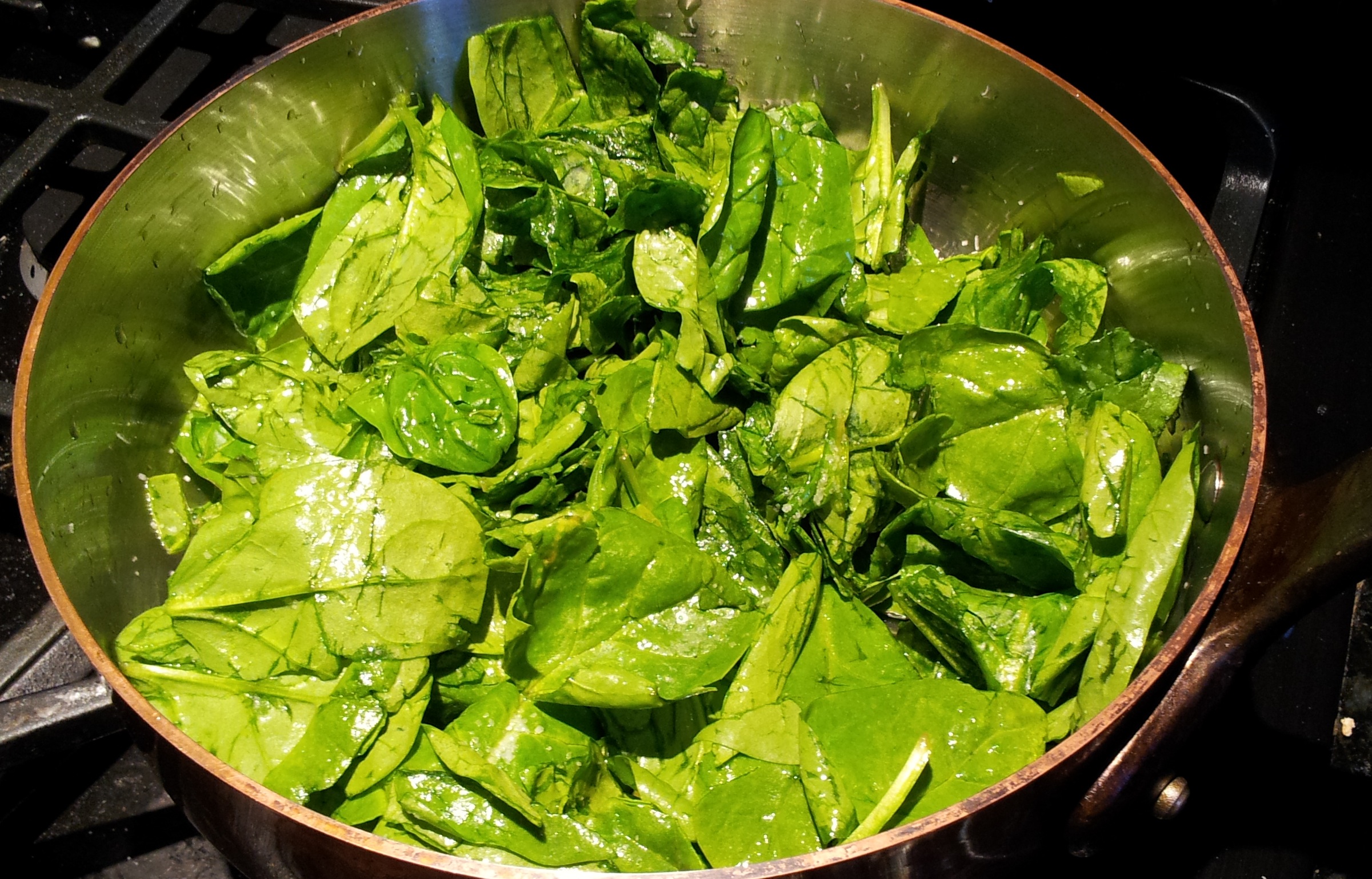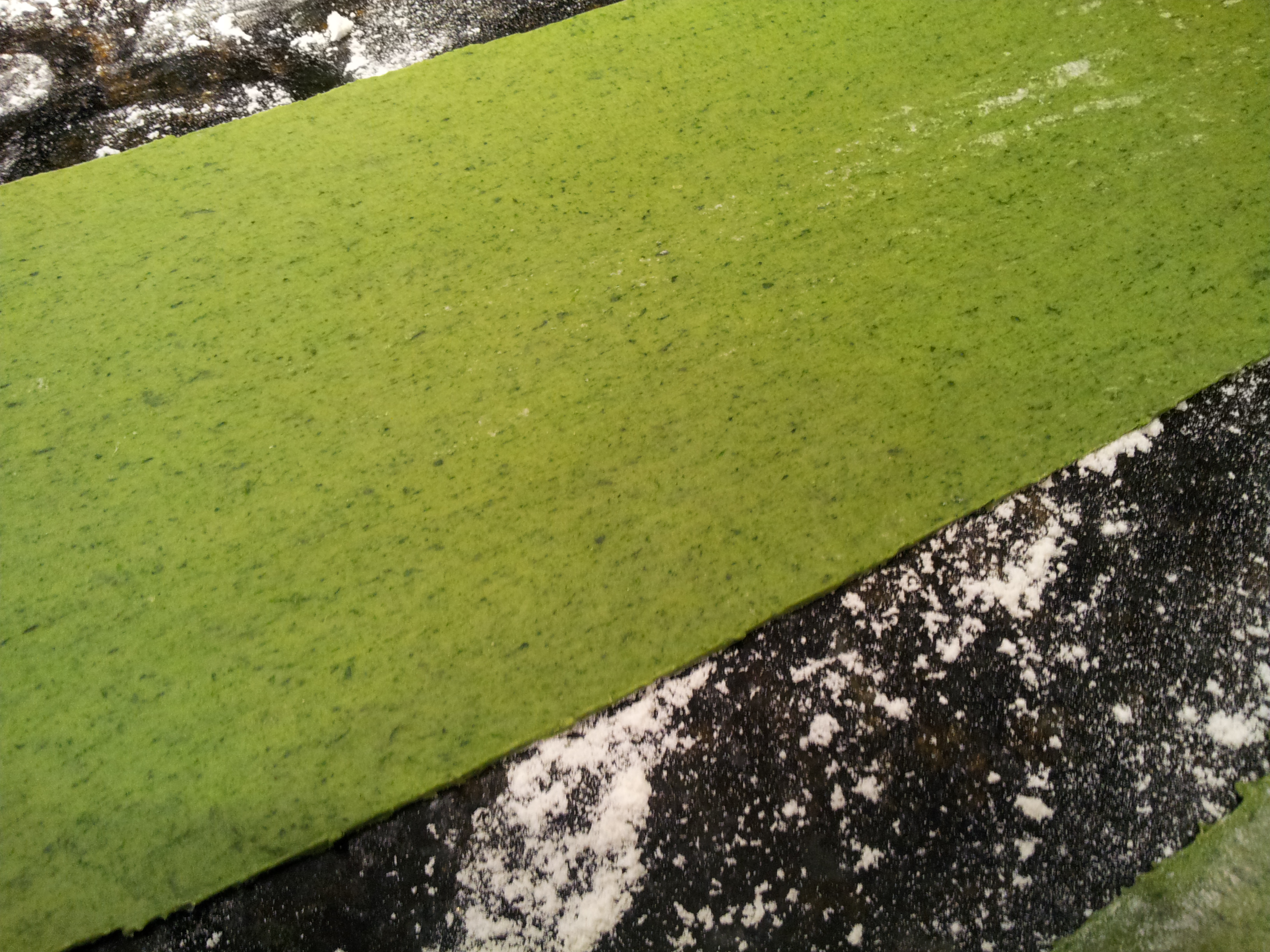Spinach Fettuccine with Butter and Parmesan Cheese Sauce
While working from home, going over the final tax bill for last fiscal year, signing the necessary documents, and crossing off a few other things so the books are completely closed, I decided to take a break and make lunch for us. Last night, around 3:30 a.m., I had the idea to take a fresh spinach pasta, cut it into thicker fettuccine, and serve it with the butter and parmesan cheese sauce that Marcella Hazan used for Tortelloni stuffed with Swiss Chard, Prosciutto, and Ricotta (found on page 191 of her most famous cookbook).
I wasn’t sure how it would come out but had a suspicion the freshness of the leaves in the pasta would be the perfect complement. This seemed like a great opportunity to test the theory and it exceeded my hopes! This is one of the best easy-to-prepare dishes I’ve ever had. I will be making this for the rest of my life. There will be days I crave it. I paired it with an individual bottle of lemon Perrier chilled in the fridge. The scent of the fresh parmesan coming off the noodles makes this a classic comfort food that is uniquely Italian.
With the window open, autumn in the air, and a nice breeze, it was a great way to spend an hour before returning to the paperwork.
The actual per serving ingredients and cost (excluding sales tax, which would vary based on your location or if you live in a state like New Jersey that doesn’t tax food) for the version I ended making were:
0.75 eggs – $0.12
1.125 cups of flour – $0.15
3 ounces of fresh spinach – $0.33
0.5 cups of shredded, high quality parmigiano-reggiano cheese – $0.80
2 tablespoons of unsalted butter – $0.25
0.5 tablespoons of salt (used to wilt spinach, most not eaten) – $0.07
Total Cost Per Serving = $1.72
There was also a bit of salt thrown into the boiling water for the pasta to cook, so you can add a few cents to that figure.
Each serving contained 983 calories, representing around half of a typical 2,000 per day calorie diet, 46.5 grams of protein, 41.9 grams of fat, and 102.8 grams of carbohydrates. The total sodium is 500 mg or so plus whatever portion of the 0.5 tablespoons of salt remained on the spinach leaves after they were wilted, washed, squeezed, and dried, which shouldn’t be much, plus whatever portion of the bit of salt thrown into the boiling water to cook the pasta managed to get absorbed into the noodles which, again, shouldn’t be a lot. It was a nice amount of pasta, so you could easily cut it in half if you wanted smaller portions.
For those of you who want to see the process of making fresh spinach pasta, it’s very similar to when I walked you through the instructions for how to make the traditional, yellow, homemade fresh pasta. The introduction of the green vegetable changes the color and adds a lighter flavor.

I put 6 ounces of spinach in a pot after cutting off the stems and washing it. I then scattered 1 tablespoon of sea salt on top of it, covered it with a lid, and let the spinach wilt over medium heat for 4-5 minutes.

When the spinach was wilted just enough, I removed it from the heat, drained the water, then put it on a cutting board to cool. Once it was cool, I bundled it in my hands, ran water over it to remove the excess salt and water, then squeezed out the moisture.

I threw the pre-mixed and measured eggs, flour, and cut spinach into the KitchenAid, where I let the dough hook beat it for 1-2 minutes, then stirred manually, then let the dough hook work its magic for another 8-10 minutes.

I took the spinach pasta dough ball out of the mixer and kneaded it by hand for several minutes, adding a bit more flour as it was too sticky for my preference.

I rolled the pasta dough through the KitchenAid pasta roller attachments to get these beautiful sheets, ready to be cut …

After cutting, I threw the spinach fettuccine into the boiling salt water, where it cooked for 1-3 minutes until it was perfect.

We used the butter and cheese recipe from Hazan, slowly incorporating it into the pasta in the order she suggests, until it was ready to serve.
If you love parmesan, you absolutely need to rearrange your week to fit this into your schedule. It’s so basic, it’s hard to explain how it suddenly becomes something more than the parts, but it does! The way I did it resulted in about 3/4th pound of pasta being used for what Hazan wants 1 pounds of pasta used for, so it’s definitely richer and more concentrated, but it’s worth it.




